New Delhi is the capital of India. A cosmopolitan city in South Asia, New Delhi is home to a diverse population that speaks many different languages and holds a wide variety of religious beliefs. The city of New Delhi is part of the larger Delhi Metro Area whose population is over 32 million, and it is well-known for its chaotic traffic and large crowds.
But there’s more to New Delhi than massive crowds and traffic. In this post, we’ll explore some of the unique features of the capital city of India.
Where is New Delhi?
New Delhi is located in the northern part of India in the National Capital Territory of Delhi (NCT). The NCT isn’t to be confused with the National Capital Region, which is even larger and contains the NCT as well as surrounding districts.
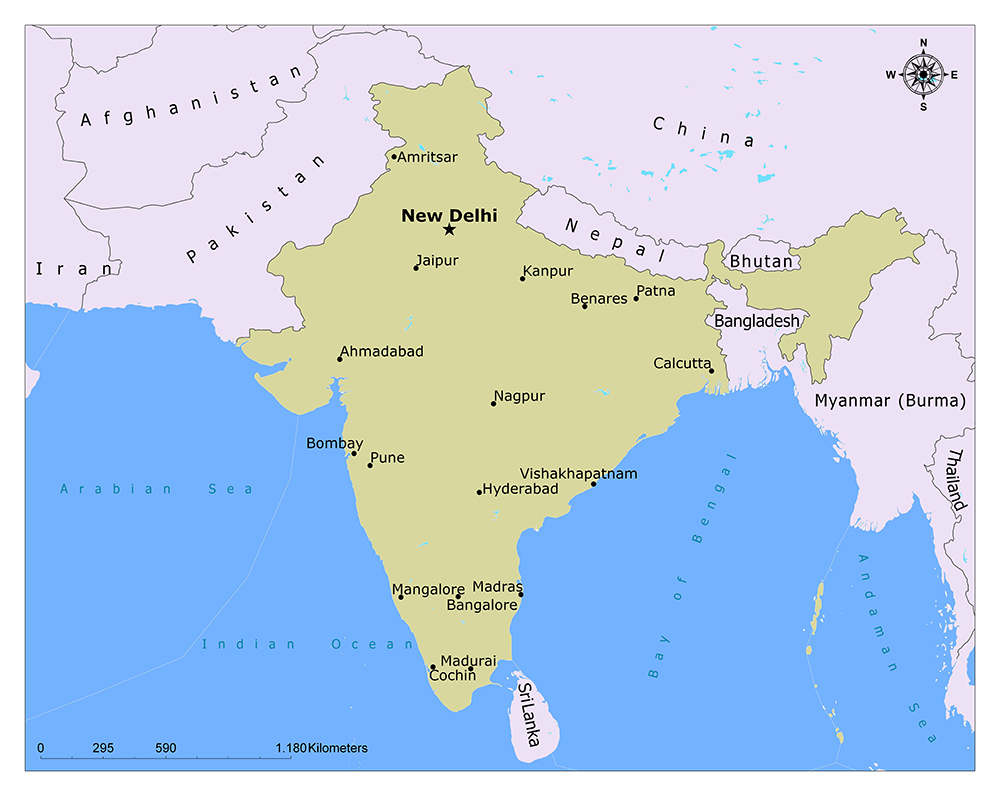
The above political map of India shows the location of New Delhi in northern India approximately equidistant to Nepal, China, and Pakistan.
History of New Delhi
New Delhi was not always the capital of India. Prior to 1911, Calcutta was the capital city of the country. India was under British rule at this time, and it was decided to move the capital away from Calcutta due to the intense anti-colonial sentiments that existed there.
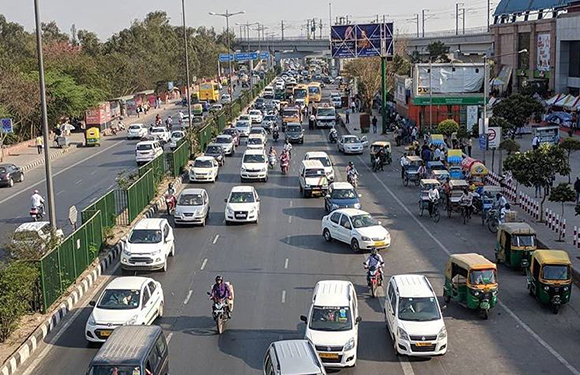
From 1912 to 1947, New Delhi served as the capital of British India. After India gained independence in 1947, the city remained the capital of independent India.
Before New Delhi became the capital of British India, the city of Old Delhi had already served as an important city for other empires. It was a financial and political center of the Delhi Sultanate, the Mughal Empire, and other ancient Indian empires.
New Delhi FAQs
What is the difference between Delhi and New Delhi?
Delhi is a city in northern India, and New Delhi is one of the 11 districts that constitute this city. The distinction between the two can be confusing because New Delhi is the capital of India, not Delhi. Delhi is the largest city in India with a population of more than 32 million people.
Is New Delhi safe?
It’s important to exercise safety precautions when traveling to New Delhi, but the city is generally safe enough for travel. Petty crimes such as pickpocketing and bag snatching are the most common occurrences, and these happen most often in crowded areas or where there are plenty of tourists.
It is advisable to remain aware of your surroundings in New Delhi and to keep an eye on values while moving through the city. There are female-only compartments in the metro that can be used for an additional feeling of safety.
How expensive is New Delhi?
The cost of spending time in New Delhi can change greatly depending on the length of time one spends in the city and the types of activities they engage in. For a couple living in New Delhi, the cost of living can be around Rs 35,000 – 40,000 per month, which is about $430 – $500.
For tourists, the price rises significantly. Spending a week in New Delhi as a tourist can cost around Rs 21,000 ($260) per person, though this number will vary from person to person.
What was the first capital of India?
Before New Delhi was the capital of India, the city of Calcutta (Kolkata) became the nation’s capital in 1772. Various important statesmen and yogis have come from Calcutta, and the city was a center of culture and politics within India from the 18th century onward.
Is New Delhi worth visiting?
As a busy capital city, New Delhi is a fascinating place. There are plenty of historical and cultural sites for visitors to admire in addition to modern attractions and amenities. Just about anyone should be able to find something interesting in the capital city, but it also may not appeal to those who are crowd averse and are looking for a quiet stay in nature.
Features of New Delhi
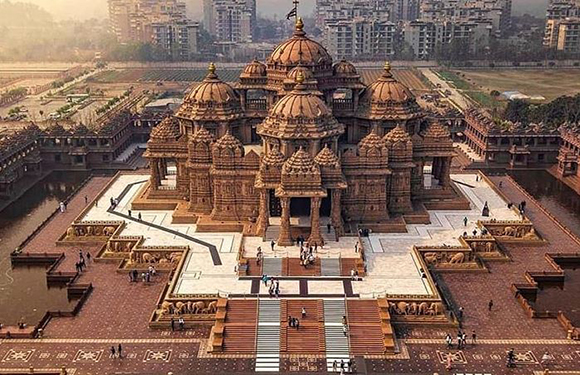
Geography and Climate
New Delhi is located on the Indo-Gangetic Plain, which is a massive fertile plain encompassing the northern regions of the Indian Subcontinent. There is very little change in elevation across New Delhi, and the city is practically landlocked, though it lies on the floodplains of the Yamuna River.
The climate in New Delhi changes dramatically throughout the year. Summers are long and can be very hot, lasting from April until October. Average temperatures reach near 40 °C (104 °F) in peak summer months, and drop to 7 or 8 °C in peak winter during December and January. Most of the rainfall in New Delhi happens during the monsoon season in July and August. The average annual rainfall is 714 millimeters (28.1 in).
Population
The city of New Delhi has an estimated 2022 population of 1,173,902, but it is located within the much larger Delhi Metro Area, which has a population of more than 32 million. Hindi is the most widely spoken language in New Delhi and functions as a lingua franca in the city. English is also used with great frequency, though it is mostly used in business and government contexts.
A wide range of religious groups are represented in New Delhi, but the largest group by a big margin is Hindus, who make up almost 90% of the population. The next largest religious communities are of Muslims, Christians, Sikhs, and Jains.
As a cosmopolitan city, the level of diversity in people, languages, and cultures, and is quite high in New Delhi. It is an international city whose landscape is constantly changing though it is rooted in ancient history.
Economy
The economy of New Delhi is one of the most important in India, and the city is the largest commercial hub in northern India. The city has the second-highest GDP per capita in the country after Goa.
As the capital city of India, the economy of New Delhi is heavily focused on service and government sector activities. The large, skilled English-speaking workforce in New Delhi has also attracted a number of multinational companies in the sectors of information technology, telecommunications, banking, hotels, tourism, and media.
Things to See and Do in New Delhi
1. Qutb Minar
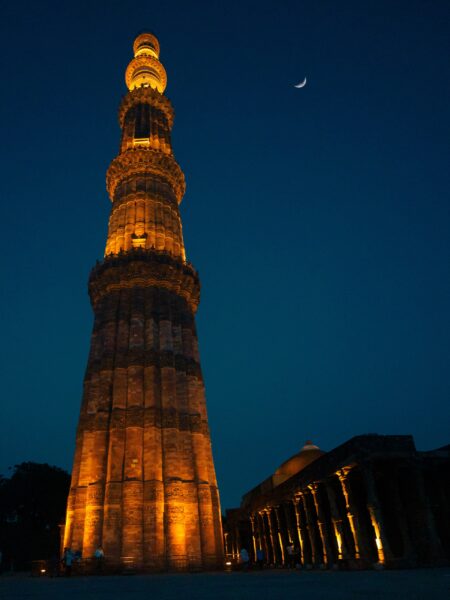
The Qutb Minar is one of three UNESCO World Heritage Sites in Delhi, and it’s one of the most popular places to visit in the city. It is the tallest minaret in India, standing at 73m (240 ft) tall, and it’s made entirely of marble and red sandstone.
The Qutb Minar is part of the larger Qutb Minar Islamic Complex that was built between 1199 and 1220. The complex is open to visitors each day from sunrise to sunset, but access to the inside of the tower is closed to the public.
2. Humayun’s Tomb
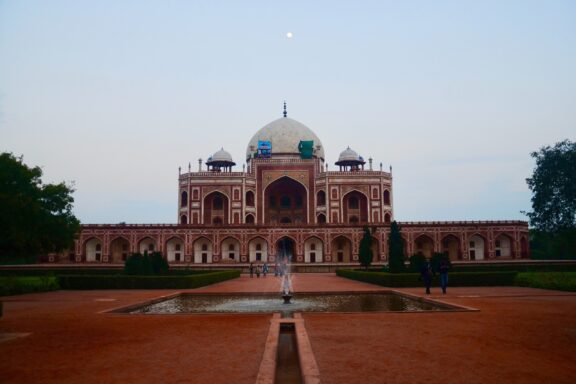
This is another of Delhi’s UNESCO World Heritage Sites. It is a tomb that was created for Humayun, a Mughal Emperor from the 16th century, commissioned by his wife, Empress Bega Begum. Not only is it the first garden tomb constructed on the Indian Subcontinent, it was also the first structure to use red sandstone in such large quantities.
The complex that houses the tomb is located on the banks of the Yamuna River and is home to many other monuments and graves. The tomb is open to visitors from 6 am until 6 pm every day for a small fee.
3. Red Fort
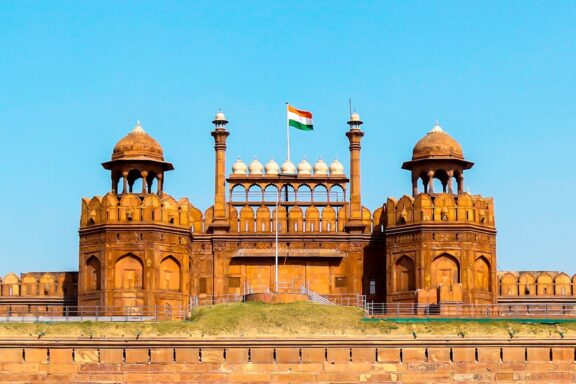
The Red Fort is one of the most frequently visited sites in Delhi, located in the neighborhood of Old Delhi. It’s an imposing and impressive example of Mughal architecture that was built over 350 years ago. It’s been the site of several important historical events and became a UNESCO World Heritage Site in 2007.
The fort can be visited every day except for Monday from 6 am until 9 pm for an entrance fee. Since the fort is large, hiring a guide or downloading an audio guide can greatly enhance the experience.
4. Lodi Gardens
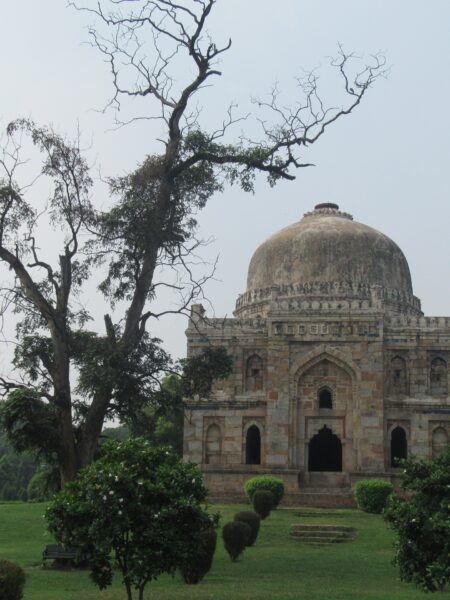
New Delhi is such a busy, urban setting that a break in nature can become almost necessary. Fortunately, Lodi Garden is a park that stretches over 90 acres in the city that can offer respite. The park is a popular spot to go for morning or evening walks and as a place to do outdoor exercise.
More than just an area with grasses for relaxing, the park is also home to a number of impressive structures and some beautiful architecture. The tombs of Mohammed Shah and Sikandar Lodi can be found here, as well as the Shisha Gumbad tomb and the Bara Gumbad monument.
5. Jama Masjid
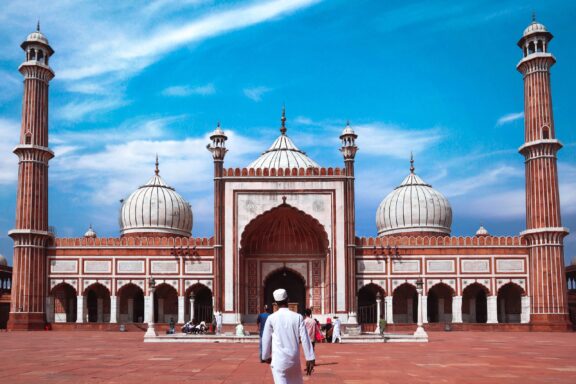
One of the largest mosques in India, the Jama Masjid was built between 1650 and 1656 by the Mughal Emperor Shah Jahan. Its full name is Masjid-i Jehan-Numa, which translates to “world-reflecting mosque” in English.
The mosque is the second-largest in India and the principal mosque in Delhi. It is where many of the city’s Muslims traditionally gather for the Friday congregational prayer. It was the imperial mosque of the Mughal emperors and functioned as a symbol of Islamic power in India.
6. Raj Ghat
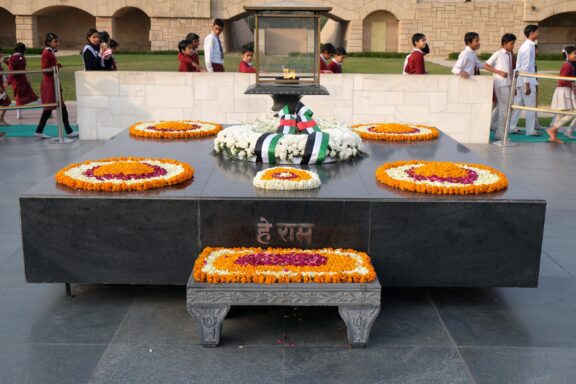
The Raj Ghat is a memorial dedicated to one of India’s most beloved and recognizable people, Mahatma Gandhi. The memorial is of a black marble platform with an eternal flame burning at one end. It marks the spot of Gandhi’s cremation on January 31, 1948, the day after his assassination.
The memorial is located on the Ring Road in Delhi, originally known as Mahatma Gandhi Road. This is an important site for many and is a wonderful place to pay respects to Gandhi.
7. Akshardham
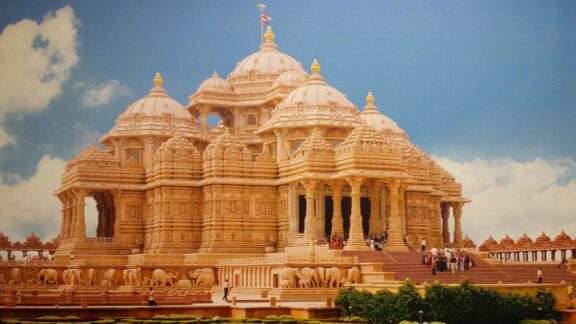
One of India’s most famous Hindu temples, Akshardham is a prime example of Indian culture, architecture, and heritage. Unlike the other sites on this list, the Akshardham was completed and opened to the public recently, in 2005. The temple features a thematic garden, a musical water fountain, and three exhibition halls that host performances.
Entry to the temple is free of charge, though you will have to pay to see the music fountain in action or to attend one of the performances in the exhibition halls.
8. India Gate
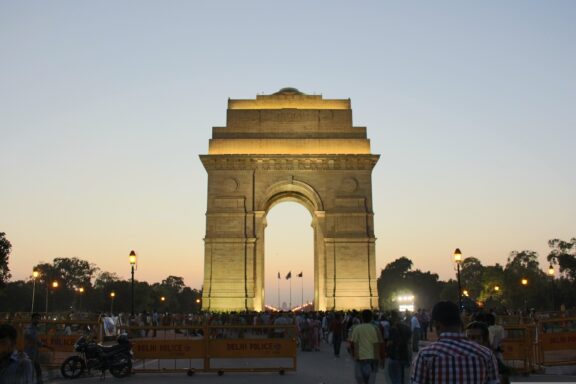
The India Gate is one of the largest war memorials in India and was once known as the All India War Memorial. It was constructed to honor the 84,000 soldiers of the British Indian Army who died during World War I from the years of 1914 to 1921. The names of 13,300 servicemen are inscribed on the walls of the gate, and four flames dedicated to the unknown soldiers has been burning at the gate since 1971.
The gate’s design is often compared to the Arc de Triomphe in Paris and the Gateway of India in Mumbai. Visiting the gate at night is a special experience, as it is illuminated by lights.
9. The Lotus Temple
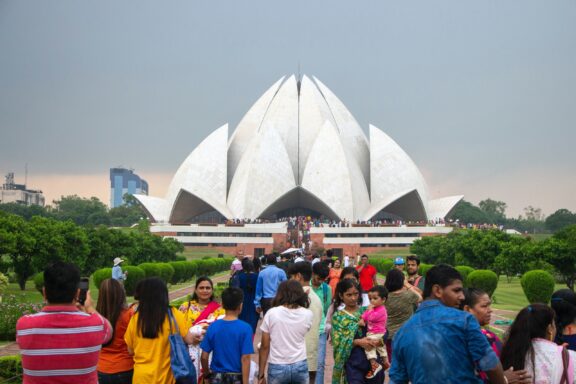
The Lotus Temple is a Bahá’í House of Worship that was completed in 1986. The temple is notable for its large size, its striking flower-like shape, and the fact that practitioners of any faith are welcome in the temple. Some sources state that the temple had already seen more than 100 million visitors by 2014, making it one of the most-visited buildings in the world.
The design of the Lotus Temple consists of 27 free-standing pieces that look like flower petals and are clad in marble that form nine sides of the building. The inside of the temple is 34 m (112 ft) tall, and there is space for 1,300 people inside. The building has won several architectural awards.
10. Jantar Mantar
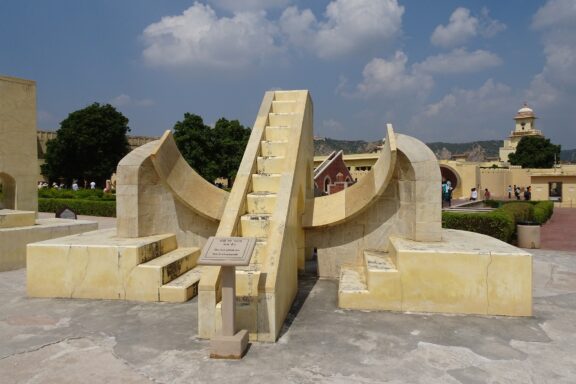
Many of New Delhi’s sites are grand, big, and a bit heavy. The Jantar Mantar is a good option for anyone looking for something a bit less intense. It is a collection of 13 instruments constructed to make astronomy observations in 1724.
Although the instruments can no longer make accurate observations due to the large buildings occupying its surroundings, they are fascinating for their ingenuity and size. It’s also noted for being one of the most accurate premodern observatories in the world.